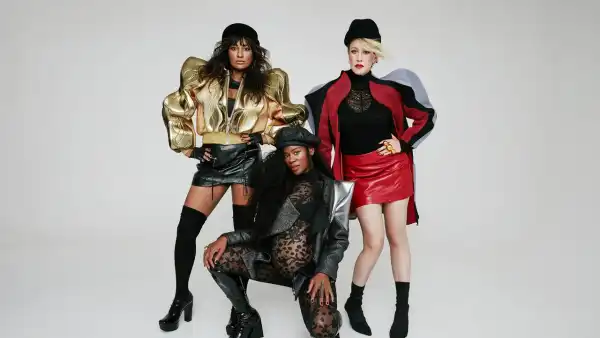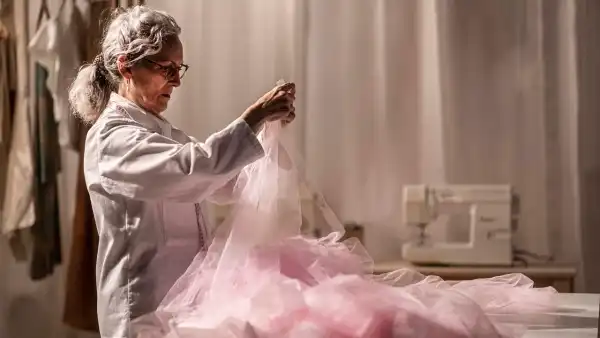
Save this storySave this storySave this storySave this story
A good number of the partnered dances of the twentieth century—the foxtrot, the waltz, the Lindy Hop—mirrored the dualistic gender roles of the era: men guided, and women were led, both on the dance floor and in life. There existed exceptions, such as in the clandestine drag balls that sprang from Black culture and gained traction during the nineteen-twenties. But these were still regarded as a minor phenomenon for “deviants,” according to a moral-reform committee inquiry from 1916. What ultimately upset the binary was disco. In 1970, following the 1969 Stonewall uprising, the d.j. David Mancuso commenced hosting exclusive underground dance events at a venue that would later be known as the Loft, located at 647 Broadway. Around the same period, two gay business owners, Seymour and Shelley, acquired a struggling establishment named the Sanctuary, which had previously been a church in Hell’s Kitchen. The subsequent year, New York legalized same-sex couples sharing the dance floor publicly, but the legally permissible and the socially acceptable often differ, and therefore these places (among others) provided a physically and emotionally liberating space, where a fresh vision could be forged. As the seventies drew to a close, when disco encountered a fierce reaction, and its records faced destruction in the streets, the motivation was not evolving musical preferences but conservative impulses: disco was a subversive political expression, a fleeting ideal propelled by queer communities, Black communities, and immigrant communities, along with all individuals at the junctions of each.
The recent album “Cut & Rewind,” by the vocal ensemble Say She She, is a disco album that endeavors to extract the urgency from the genre’s prime and transpose it onto a political climate burdened by numerous analogous anxieties. The group, consisting of the singers Piya Malik, Sabrina Mileo Cunningham, and Nya Gazelle Brown, characterizes themselves as a “discodelic soul” group, fusing the sonic textures of disco with funk and psychedelia. Both of the band’s prior offerings, “Prism” (2022) and “Silver” (2023), contain tracks that would seamlessly integrate into a nineteen-seventies dance setting, yet the albums also incorporate ballads suited for the late-night R. & B. radio scene near the decade’s conclusion. “Cut & Rewind,” launched earlier this month, stands out as the initial project that embodies pure disco—not simply as an act of tribute, nor solely to modernize disco’s sounds and aesthetics for a “contemporary audience.” Instead, the album resonates as if crafted by committed practitioners of the style, not tourists aiming to capitalize on nostalgia, employing disco as a sharp instrument for analysis of the present.
“Cut & Rewind” doesn’t branch out quite as much as its predecessor—“Silver” lasts for an hour and six minutes, whereas “C. & R.” stretches to roughly forty-five minutes—and it contains a tension, a rhythmic drive, that advances it. Setting aside genre norms, Say She She is fundamentally a vocal ensemble marked by remarkable talent and diversity. The members of the group harmonize effectively, and each is capable of leading a song independently. However, in contrast to prior albums where the vocals were emphasized in the mix, “Cut & Rewind” showcases fuller, more extensive instrumentation, and it possesses a more dense sonic quality than the band’s earlier work. On the title track, a series of bass lines broaden into an anticipated drum beat. Subsequently, the three voices become audible. This operates as both a song and a declaration of purpose, with the phrase “We’re through dealing in petty / now we’re getting good and ready” evolving into a key idea for the overall body of work. In “Disco Life,” the instrumentalists involved in the album (Dan Hastie, Sam Halterman, Sergio Rios, and Dale Jennings) generate a thick and swirling blend of bass, synth, and drums that supports a paean to disco’s ideal, to the recovery of physical space. Furthermore, the track intelligently addresses the Disco Demolition Night that transpired at Chicago’s Comiskey Park in 1979. Rather than mentioning it directly, the song’s lyrics present an expanded baseball comparison, commencing with “We’re taking back the major league / A playing field where all are free.”
“She Who Dares,” conversely, depicts a kind of dystopia. Despite a lively, bass-driven rhythm, it outlines a near future where all rights and independence are revoked from women, with the vocal trio embodying a form of superhero resistance. The contrast between the song’s cheerful sound and its somber imagery contributes to its compelling and pressing quality. Alike much of the album, “She Who Dares” progresses steadily, propelled by bass and drums, alongside a brief, soaring guitar solo in the song’s closing section. The sound conveys a sentiment beyond the lyrics: sustained momentum and dancing are crucial. “Under the Sun,” in the interim, stands as a pro-labor song, expressing sorrow for the recurring dilemma of individuals relinquishing their time, vitality, and spirit to dissatisfying jobs that enrich others. The line “Power is a light source / if treated with respect” hovers over serene guitar.
“Cut & Rewind” juggles multiple elements, musically and politically, yet it handles its equilibrium effectively, partly because it refrains from attempting to persuade listeners into nostalgia. Notwithstanding the band’s numerous apparent influences (a prominent one being Nile Rodgers & Chic), the album does not try on countless, glittering outfits of past times. The ensemble remains devoted to detailed harmonies, which are a source of the album’s singular delights. On a track such as “Bandit,” the voices meld with clarity and precision, yet the harmony succeeds not only through the three vocalists singing in unison but also because the song permits an imperfect convergence of one voice with the next. The result is akin to hearing three individuals singing the identical song through the slender walls of separate apartments, and it is captivating to perceive how they discover each other and synchronize. Furthermore, all of the album’s goals align under one umbrella. In discussions concerning resistance as a source of joy, many concentrate on a capitalistic interpretation of self-care that encourages individuals to disengage their hearts and minds. “Cut & Rewind,” conversely, accurately implies that a utopia cannot be constructed when it opposes nothing. An objective appraisal of an untenable world must be conducted, and solely then can imagination function to create, upon the remnants, the world one aspires to see. The endeavor lacks allure, but the music accompanying it might possess it. ♦
Sourse: newyorker.com







